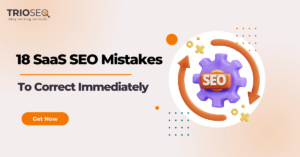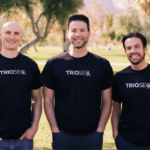Welcome to our comprehensive guide on SEO acronyms! If you’re getting started to explore the world of Search Engine Optimization (SEO), you will find yourself lost in a sea of acronyms. When learning about SEO, you’ll find many terms, such as SERPs and KPIs. It can feel like you’re trying to understand a whole new language made of acronyms. But don’t worry, we’ve got you covered!
In this blog, we’ve compiled a list of over 90+ SEO acronyms that every strategist, whether a novice or a seasoned pro, must know. These acronyms are not just fancy terms but are crucial to understanding the complex mechanisms that drive SEO strategies. So, buckle up and get ready to dive into the fascinating world of SEO!
Top SEO Acronyms Explained
Here are the top acronyms you should know to confidently navigate the SEO landscape.
It is a description you can add to an image on a webpage. It describes the image and helps search engines understand its subject. Screen-reading tools also use it to describe images to people with visual impairments.
AMP: Accelerated Mobile Pages
It is a technology designed to load web pages on mobile devices faster. It’s a stripped-down version of HTML, which helps improve the performance of the mobile web. Websites using AMP typically load faster, providing a better user experience.
AOV: Average Order Value
AOV refers to the average amount of money spent by customers on a website. Divide the total revenue by the total number of orders to calculate the average order value.
API: Application Programming Interface
API is an interface that allows various software programs to interact with each other. It is a set of rules and protocols to build and interact with software applications.
B2B: Business to Business
B2B is a method of trade where businesses deal and transact with other businesses rather than end customers.

B2C: Business to Consumer
B2C refers to selling products and services directly between a business and consumers who are the end-users of its products or services.
BMM: Broad Match Modifier
Used in the digital advertising landscape, BMM is used to define search queries. This match type will trigger your ads if the keywords are in a visitor’s search query in the exact or close variant form.
BR: Bounce Rate
BR is the percentage of single-page sessions or visits where the user does not navigate beyond the initial landing page.
CAC: Cost Per Customer Acquisition
CAC is a business’s average expenditure to win a new customer for the product/ service you’ve offered or sold.
CDN: Content Delivery Network
A CDN is a geographically distributed group of servers that caches content close to end users.
CLS: Cumulative Layout Shift
CLS measures how much a webpage unexpectedly shifts during its life.
CMS: Content Management System
A CMS helps companies manage digital content. They can use CMS to perform various daily tasks, including creating, editing, publishing, and organizing the content.
CPC: Cost Per Click
CPC is an online advertising revenue model where advertisers are billed according to the number of times visitors click on a display ad.
CPL: Cost Per Lead
The Cost Per Lead is the dollar amount spent on ad and marketing campaigns to acquire a new lead, i.e., a potential customer.
CPM: Cost Per Mille (Cost Per Thousand Impressions)
Cost Per Mile is the amount an advertiser will pay for each 1,000 impressions, i.e., Cost Per Thousand Impressions, in literal terms.
CPV: Cost Per View
CPV is an advertising billing model where an advertiser is charged based on the number of views on their advertisement.
CR: Conversion Rate
Conversion rate is an analytical metric used to measure the success of a marketing campaign. It can also be said to be the ratio of successful conversations to the total number of visitors/ users. Conversions can be any sign-ups or purchases.
CRO: Conversion Rate Optimization
CRO means increasing the percentage of users who complete a specific action. In simpler terms, it is the process of improving and achieving the desired success rate.
CSS: Cascading Style Sheets
It is a style sheet language. CSS is generally used to specify the presentation and styling of any document written in any markup language, such as HTML, XML, etc.
CTA: Call To Action
Call To Action is a short yet essential marketing message. It is specifically intended to motivate users to take a particular action. The action can be anything from buying a specific product to subscribing to a newsletter.
CTR: Click Through Rate
Click Through Rate is the total number of specific clicks on a link that has been clicked many times on any webpage, email, or advertisement. Through CTR, website owners can measure which advertising campaign has been successful when a particular ad receives a higher CTR.

DA is a type of Search Engine Ranking Score that has been developed by Moz. It shows how any website has been ranked on search engines’ result pages, i.e., SERPs. DA score is tracked on a scale of 1 to 100, where one is the worst and 100 is the best.
DMOZ: Directory Mozilla
Directory Mozilla – also known as the Open Directory Project- was one of the major web directories. AOL owned DMOZ, and the community of volunteer editorial built and maintained it.
DNS: Domain Name System
It is a system that stores domain details in a specifically distributed database. A DNS translates domain names into IP addresses and vice versa for its primary function.
DNT: Do Not Track
DNT – A request header that indicates the user’s tracking preference lets users choose if they want privacy or personalized content.
E-A-T: Expertise, Authoritativeness, Trustworthiness
A framework used by Google to assess the quality of content on websites.
E-E-A-T: Experience, Expertise, Authoritativeness, Trustworthiness
An extension of E-A-T, where Google emphasizes genuine, personal involvement or practical familiarity with the topic covered in a piece of content.
FCP: First Contentful Paint
It refers to the time a browser takes to load a web page’s first text, image, or other elements.
FOMO: Fear Of Missing Out
The feeling of apprehension that one is either not knowing about or missing out on events or experiences.
FTP: File Transfer Protocol
A standard network protocol to transfer files from one host to another over a TCP-based network. A good example is our everyday Internet.

GA: Google Analytics
It is a free analytics tool that lets you have an in-depth look at your website/app and its performance overview. Google Analytics integrates with Google’s marketing and advertising platforms and products.
GMB: Google My Business
GMP is also a free tool allowing users to promote their Business Profile and Business Website through Google search and Google Maps.
GR: Google Rank
A term often refers to a website’s position in the Google search results.
GSC: Google Search Console
GSC is a part of the Google suite and is a free service associated with monitoring and maintaining your website’s presence in Google Search Results.
GTM: Google Tag Manager
GTM is also from Google, which lets users manage HTML tags and JavaScript for website analytics and tracking purposes.
H1: Heading 1
H1 is an HTML tag for defining a webpage’s main heading. H1 is the main title of a webpage and is essential for SEO because it helps search engines understand what the page is about.
H2: Heading 2
H2 is a subheading on a webpage that usually comes after the main title (H1). It is used to introduce a new section or topic within the page. It’s smaller than the H1 title but still quite significant. Search engines use H2 to understand the structure of your content and its relevance to the search query.
H3: Heading 3
H3 is a sub-subheading that usually comes under an H2 heading. It further divides the content under an H2 heading into smaller sections. It’s smaller than H2 but larger than standard text. Like H1 and H2, search engines also use H3 to understand the content and structure of your webpage, which helps improve your webpage’s SEO.

HTML: Hypertext Markup Language
HTML is a type of programming language used to create web pages and the elements to be displayed in a web browser.
HTTP: Hypertext Transfer Protocol
It is an application protocol dedicated to collaborative, distributed, and hypermedia information systems that send data over the Internet.
HTTPS: Hypertext Transfer Protocol Secure
HTTPS is an extension of HTTP used for secure communication via a computer network across the Internet.
IP: Internet Protocol
It’s a set of rules that manages how data is sent and received over the Internet.
JS: JavaScript
JavaScript is a programming language that enhances web pages to provide a more user-friendly experience.
JSON: JavaScript Object Notation
JSON is a lightweight data interchange format that is easier for humans to read and write and also more accessible for machines to understand.
KPI: Key Performance Indicator
It is a measurable value showing how effectively a company achieves key business objectives, which is similar to OKRs.
LCP: Largest Contentful Paint
It is a performance metric that measures the total time it takes for the largest content element on a webpage to load. It is used to assess a website’s loading speed and user experience.
LSI: Latent Semantic Indexing
It is a mathematical method to determine the relationship between concepts and terms in content and retrieve relevant information.

LSO: Latent Semantic Optimization
An SEO technique that involves optimizing a website around topics, not just individual keywords.
LTV: Lifetime Value
Lifetime Value is a metric representing the total revenue or profit a business expects to earn from a customer over the entire course of a relationship. It helps businesses make informed decisions and plans for customer acquisition and retention.
NAP: Name, Address, Phone Number
Putting in the correct NAP information for your business helps with local SEO.
ORM: Online Reputation Management
It is about improving or restoring your brand’s good standing by countering, weakening, or eliminating the negative material found on the Internet and replacing it to improve credibility.
PA: Page Authority
Moz developed a score called PA to predict the ranking of a web page on search engine result pages (SERP). The score range of PA is from 1 to 100; the higher the score, the greater the ability to rank.
PBN: Private Blog Network
A specific group of websites whose primary task is to offer backlinks to various websites to improve their Google Search Rankings. The idea is to artificially boose these website’s perceived authority in search engines’ eyes.
PFI: Pay for Inclusion
PFI is a marketing practice where businesses pay search engines or directories to include their website in search results, regardless of its organic ranking.

PII: Personally Identifiable Information
PII is information that can be used to uncover an individual’s identity.
PPA: Pay Per Acquisition
It is also known as Cost Per Acquisition (CPA), a model where advertisers pay for a specific action taken by a user, such as filling out a lead form or making a purchase.
PPC: Pay Per Click
PPC is an online advertising model where an advertiser pays every time their advertisement link is “clicked” upon.
QS: Quality Score
QS is a metric used by Google Ads to determine the quality of your ads. It indicates the relevance of an advertiser’s ad and is scaled on a score from 1 to 10, where 10 means the best.
RFP: Request For Proposal
It is a business document announcing a project that collects bids from different SEO agencies.
ROAS: Return On Ad Spend
ROAS is a marketing metric measuring the revenue earned per dollar spent on advertising.
ROI: Return on Investment
It is a measure used to evaluate the efficiency or profitability of an investment, typically calculated by dividing the benefit (or return) of an investment by the cost of the investment.
RSS: Really Simple Syndication
RSS refers to a collection of web feed formats that provide updated/ shared information in a standardized way. It could be for a website or blog entries as well as news headlines, audio or video files.
SaaS: Software as a Service
An online business model where software is hosted on a website and is provided to end users as a service. Some examples are project management services (Trello, Airtable, etc.), website development platforms (WordPress, Shopify, etc.), and email management services (MailChimp, Klayvio, etc.) – did you know we offer SaaS SEO services?

SEM: Search Engine Marketing
A digital marketing strategy, mostly paid, is done to proactively put a website (with a product, service, or information) in front of potential visitors on a search engine like Google.
SEO: Search Engine Optimization
It is the process of changing a website’s design and content to rank it higher in search engine results for relevant search queries. It is an organic (unpaid) method of gaining more traffic to your website.
SER: Search Engine Ranking
Search Engine Ranking means the position of a particular web page in the search results for a specific query on search engines like Google.
SERM: Search Engine Reputation Management
SERM refers to three primary areas of manipulation by the practitioner. Reputation issues caused by Google Autocomplete, the negative search results on the first SERP, and the negative connotation associated with the Google Suggestions at the bottom of the SERPs.
SERP: Search Engine Results Page
Web pages shown by search engines (like Google) in response to a search query. The goal of any website owner is to rank their website higher on the SERPs for better traffic.
SFTP: Secure File Transfer Protocol
It is a protocol used for transferring files securely over a network. It provides access, transfer, and management functionalities over any reliable data stream.
SIR: Search Intent Research
The process of analyzing and understanding the type of query or intent behind the search terms used by users in search engines.
SMM: Social Media Marketing
SMM refers to the use (usually a paid service) of social media platforms to promote any/ all products or services.
SMO: Social Media Optimization
SMO is the strategy of using social media networks to manage and grow the online presence of a person or company. It can also be used for events, product promotions, brand awareness, and publicity.

SMX: Search Marketing Expo
A conference series that educates attendees on search marketing, SEO, SEM, and social media marketing strategies.
SQL: Structured Query Language
It is a type of programming language primarily used to manage the database for various purposes. It can perform operations over the stored data, such as add, delete, retrieve, and more.
SSI: Server Side Includes
SSI can be termed as the directives on web applications that feed an HTML page with dynamic content.
SSL: Secure Sockets Layer
SSL is a security protocol ensuring privacy, authentication, and integrity of Internet communications. SSL certificate ensures that data shared between an online server and a browser stays encrypted and secure.
SVG: Scalable Vector Graphics
It is a graphic format based on XML, used to display various graphics on the Web (Internet)and other environments.
TLD: Top-Level Domain
TLD is an acronym referring to the last part of a domain name on the Internet. For example, in www.example.com, “.com” is the TLD.
TOS: Terms of Service
TOS is an agreement where the user agrees to abide by specific rules and conditions for using a service or website.
TTFB: Time To First Byte
It is a measurement of the responsiveness of a web server. It measures the time gap between the request for a resource and the response.
UGC: User Generated Content
It refers to any content users post on online platforms such as social media, blogs, etc.
UI: User Interface
It is how the user and a computer system interact, particularly the use of input devices and software.
URL: Uniform Resource Locator
It refers to a web resource specifying its computer network location. URL can be seen on the address of a webpage on the Internet. For example, “https://www.example.com/page” is a URL.
UX: User Experience
UX refers to a person’s overall experience when using a website or computer application, especially regarding how easy or pleasing it is.
VTC: Voice Technology Content
It is often referred to as Video Teleconferencing. This technology facilitates the communication and interaction of two or more users through high-quality audio and video over Internet Protocol (IP) networks.
W3C: World Wide Web Consortium
It is an international community that develops open standards to ensure the long-term growth of the web.
WPO: Web Performance Optimization
It is the field of knowledge concerned with improving the speeds at which web pages are downloaded and displayed on web browsers.
XML: Extensible Markup Language
It is a markup language (like HTML) that defines a set of rules for encoding documents in a human-readable and machine-readable format.
YMYL: Your Money or Your Life
It is a term used to categorize types of web pages that could potentially impact a person’s happiness, health, financial stability, or safety.
Conclusion
Understanding these 90+ SEO acronyms is crucial for anyone involved in the digital marketing landscape. Whether you’re a beginner just dipping your toes into the world of SEO or a seasoned strategist looking to stay on top of the latest trends, this comprehensive list serves as a valuable resource. This list makes the complex terms more straightforward and helps you grasp the ideas that make SEO work.
Remember, the world of SEO is constantly evolving, and staying updated with the terminology is the first step towards adapting to these changes. Keep this list close by, and you’ll be ready to handle the ever-changing SEO landscape. Enjoy your SEO journey!




![Featured Image - Mental Health Content Writing [Best Practices and Ethical Considerations]](https://trioseo.com/wp-content/uploads/2024/05/Mental-Health-Content-Writing-Best-Practices-and-Ethical-Considerations-300x157.png)
![Featured Image - Beginner’s Guide to CBD Content Writing [Tips Included]](https://trioseo.com/wp-content/uploads/2024/05/Beginners-Guide-to-CBD-Content-Writing-Tips-Included-300x157.png)

![Featured Image - [Ultimate Guide] SEO For Tech Companies That Outranks Competitors](https://trioseo.com/wp-content/uploads/2024/04/Ultimate-Guide-SEO-For-Tech-Companies-That-Outranks-Competitors-300x157.png)

![Featured Image - B2B SaaS SEO - Ultimate Guide [Strategy Included]](https://trioseo.com/wp-content/uploads/2024/04/B2B-SaaS-SEO-Ultimate-Guide-Strategy-Included-300x157.png)

